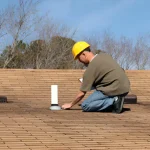When disaster strikes, one of the first questions homeowners ask is, “Will my insurance cover the cost to rebuild?” The answer depends largely on whether your policy includes replacement cost coverage. This type of protection can make all the difference between patching things up temporarily and restoring your home to its original condition.
What Is Replacement Cost?
Replacement cost refers to the amount it would take to repair or replace damaged property using new materials of similar kind and quality—without deducting for depreciation. Unlike other valuation methods, it ensures you can actually rebuild or replace what was lost.
This coverage often applies to your home’s structure, other detached buildings like sheds or garages, and personal belongings such as clothing, electronics, or furniture. For example, if a hurricane damages your roof, replacement cost coverage would pay to install a new roof with comparable materials, regardless of the age or condition of the old one. Similarly, if a five-year-old couch is destroyed in a fire, your insurer would cover the current price of a new, comparable couch—not the depreciated value of the old one.
Replacement Cost vs. Actual Cash Value
To understand the value of replacement cost, it helps to compare it with actual cash value (ACV). ACV coverage takes depreciation into account, meaning you’ll receive only the current value of your property at the time of loss.
Imagine your roof originally cost $15,000 but is now ten years old. With replacement cost coverage, your insurer pays for a brand-new roof. With ACV, however, the payout would be reduced based on age and wear—possibly only $7,000—leaving you to cover the difference. While ACV may lower your premiums, it can leave you underfunded when you need coverage most.
A Quick Note on Stated Value
Another option is stated value coverage, where you and your insurer agree on a set payout amount for specific items or structures before a loss occurs. While this simplifies the claims process, it typically doesn’t provide the same level of protection as replacement cost.
Why It Matters for Florida Homeowners
Florida homeowners face unique risks, from hurricanes to tropical storms. The financial difference between replacement cost and ACV can amount to tens of thousands of dollars—money most families can’t afford to pay out of pocket. Having replacement cost coverage ensures you can replace damaged roofs, windows, or even an entire home without worrying about depreciation eating into your payout.
Steps to Stay Protected
To get the most out of your homeowners insurance, consider the following:
- Check your coverage carefully. Confirm that replacement cost applies to your home, personal belongings, and detached structures.
- Don’t overlook flood insurance. Standard homeowners policies exclude flood damage, which is especially critical in Florida.
- Review your policy each year. Rising construction costs and home upgrades can affect the amount of coverage you need.
Final Thoughts
Replacement cost coverage is more than just an insurance option—it’s peace of mind. It ensures that if disaster strikes, you’ll have the financial support to rebuild your home and replace your belongings without losing value to depreciation. For Florida homeowners especially, it’s one of the smartest choices you can make to safeguard your future.











